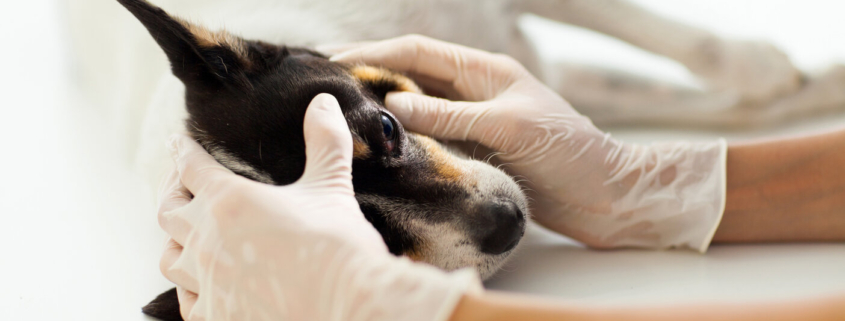Here’s Why Not to Underestimate Dry Eye in Dogs
What Is Dry Eye in Dogs?
The simplified explanation for dry eye is an inadequate production of tears. However, the condition is so much more complicated than that definition would lead you to believe. The eye is a complex ecosystem containing germ-fighting cells and pH balanced glands.
A dog’s eye is covered by what’s called a tear film: a thin, complex fluid that covers the eye. To keep the eye healthy, tears are produced to cover the cornea, washing away debris and harmful bacteria.
Dry eye isn’t just a condition in dogs; humans can suffer from it, as well. However, the symptoms and severity are not as pronounced.
How to Spot Dry Eye
Flat-faced breeds of dogs (shih tzus, pugs, Boston terriers, etc.) are more susceptible to dry eye than others. If you’re attending to a dog in that breed category, you’ll want to do a thorough check of their eyes and talk with their owner to make sure the patient isn’t exhibiting any irritable behavior when it comes to their eyes. Dogs are most likely to develop dry eyes between 4-6 weeks old, but this condition can still appear at any age.
There are a few signs and symptoms you can be on the lookout for caused by dry eye in dogs. The first symptoms you may notice are red eyes and mucoid discharge. This is usually due to the lack of tears produced to adequately coat the eye and keep it free of irritants. It can also be due to underproduction of a specific type of high-quality tear. The former cause is the most common.
Other signs include pawing at the eyes due to pain and excessive blinking to keep the eyes closed.
Like pannus in dogs, dry eye is an immune-related condition in that it is caused by the dog’s own immune system attacking a part of its body. What it thinks is a foreign invader, is actually functioning as it normally should. In this case, the immune system attacks and shuts down the lacrimal glands—the structures that produce tears. If left untreated, dry eye can lead to painful ulcers that can rupture or pigment build-up causing permanent blindness.
Less common causes include medications, like oral antibiotics containing sulfonamide, and genetic factors that cause abnormally small glands.
What to Do About Dry Eye
Once dry eye is confirmed by a Schirmer tear test or using special stains on the cornea, there are a couple of different treatment options. Like many conditions, one of the most important factors when it comes to treatment for dry eye in dogs is early detection. But no matter how early the detection, treatment is lifelong.
The most common and effective treatments today are medicated drops or ointment that goes directly on the affected eye. By stimulating the lacrimal glands to produce more tears or start producing tears again, the drops or ointment should be able to give some relief to your patient.
Vetrix is a trusted resource for veterinary practices and the devoted owners they continually serve. Browse other topics of interest that provide you with much-needed information.




